British Museums Virtual Exhibition of Ancient Near Eastern Art
Museum of the Ancient About Eastward
Objects Spanning about 7,000 Years
The Museum of the Ancient Virtually Eastward is one of the nigh prominent museums of ancient Near Eastern art and culture in the earth. Its drove features unique objects dating from the sixth millennium BC to the first centuries AD. Geographically it ranges from Uruk and Babylon to Assur. Among other things, the collection of the Museum of the Aboriginal Near East includes globe-famous reconstructions of monumental compages, such as the Ishtar Gate of Babylon. These objects were unearthed in the course of German excavations in Mesopotamia. They lend particular authenticity to the collection which is presented in the southern wing of the Pergamonmuseum.
Presentation in the Buildings
Since the opening of the "Museum on the Kupfergraben" – today'south Pergamonmuseum – in 1930, about 2,000 archaeological finds from the collection of the Museum of the Ancient Near Eastward have been on exhibit on the main floor of the south fly. The permanent exhibition volition exist expanded to the upper floor one time the building has been renovated and extended in accordance with the Museum Island Primary Plan. This
increase in exhibition space will allow for the presentation of many ancient Near Eastern antiquities that could not be exhibited so far. Additionally, it will enhance public awareness about the international standing of the Museum of the Ancient Near East which is, after all, one of the most important academic institutions dealing with aboriginal About Eastern cultural history.
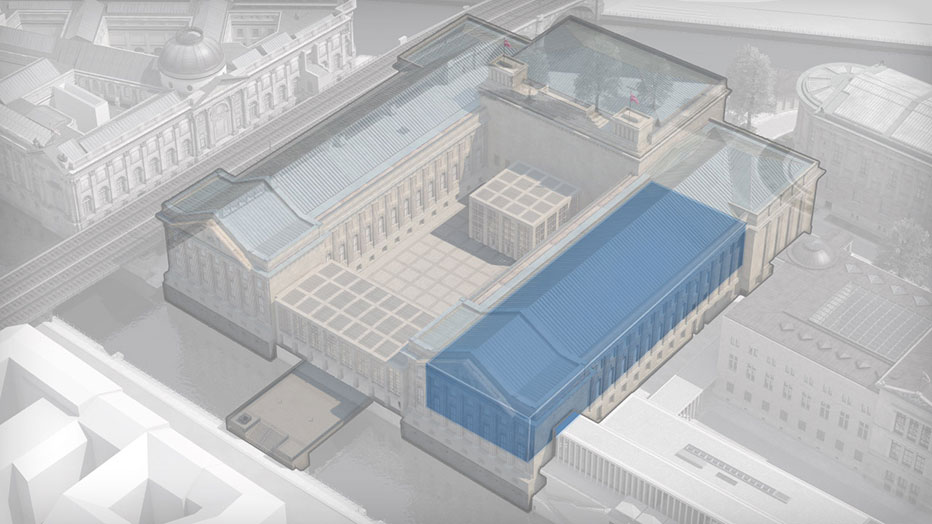
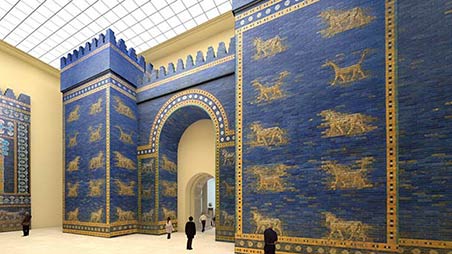
Immediately afterwards beginning the excavations in Babylon in 1899, Robert Koldewey discovered hundreds of thousands of color-glazed brick fragments. The Berlin-based scholars succeeded in reassembling these fragments, and they reconstructed a monumental gate decorated with reliefs – the Ishtar Gate. The walls of the gate are decorated with reliefs of aurochs and serpent-bodied dragons confronting a radiant blue groundwork. These creatures correspond the Babylonian deities Adad and Marduk. The splendidly designed Ishtar Gate was congenital during the reign of Nebuchadnezzar Two (604 – 562 BC). Information technology is one of several gates that in one case led into Babylon, and function of the city's wall which counted among the "Vii Wonders of the Ancient World."
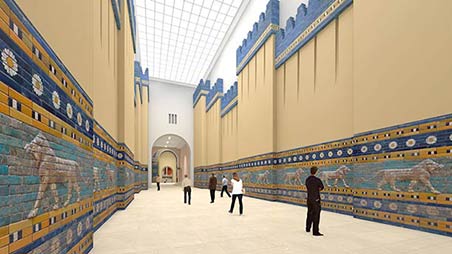
The Processional Street of Babylon is intimately associated with the Ishtar Gate. Long stretches of its course can withal be seen in Babylon. However, lavish decoration was limited to a section of about 180 meters which led to the city gate from the due north. Simultaneously with the reconstruction of the Ishtar Gate, a small section of the Processional Street was reconstructed in the Pergamonmuseum, albeit reduced in width in comparing to the original. On both sides, lions are seen striding against a bluish background. The lion is the creature companion of Ishtar, the goddess of honey and war. During the Babylonian New year's day's festival, the three divine beings lion, dragon, and aurochs acted equally guardians of the procession.
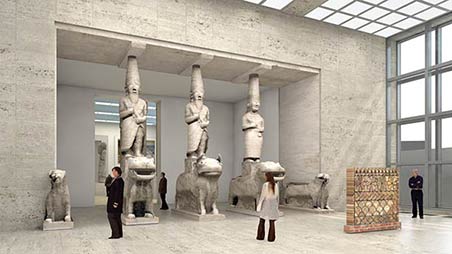
In the futurity, the façade of the rulers' palace of Tell Halaf volition be the gateway betwixt the new fourth wing of the Pergamonmuseum and the Museum of the Ancient Near East. The façade shows three awe-inspiring statues of gods rise from the backs of 2 lions and a bull. The unabridged ensemble is about half-dozen meters high. The Late Hittite palace was built in northern Syria in the late 9th century BC. When the finds were divided up, a share of the sculptures and reliefs unearthed by the excavator Max Freiherr von Oppenheim came to Berlin. The sculptures exhibited in the Tell Halaf Museum were destroyed during World War 2. However, thousands of basalt fragments could be rescued and the façade restored, a job that took years to accomplish.
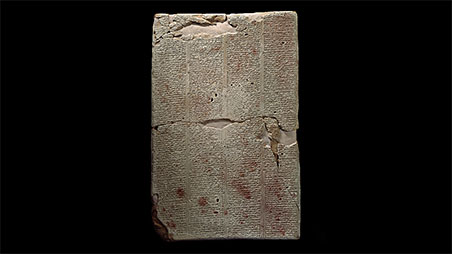
The starting time tablet of the "Middle Assyrian Law" was inscribed during the reign of King Ninurta-apil-Ekur in Iraq (1191 – 1179 BC). The 58 paragraphs focus on apparel codes every bit well as matters pertaining to criminal offenses, women, marriage, and matrimonial holding. Many of the laws are remarkably strict, as becomes evident from the following case: "§ 37 If a denizen wishes to divorce his married woman, he tin give her something if he wants to, but if he is not willing to do and so he is not obliged to give her anything: she volition become away empty-handed." However, documents of everyday life testify that women enjoyed much more freedom than that. In the future, the tablet will be on exhibit on the upper floor of the southward wing of the Pergamonmuseum.
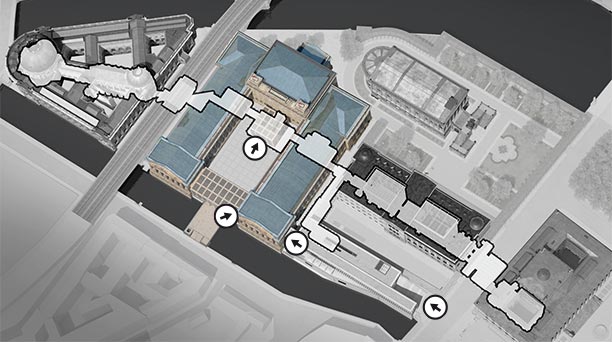
Entrances
The permanent exhibition of the Museum of the Aboriginal Near East will be attainable via the historical entrance of the Pergamonmuseum equally well as via the James-Simon-Galerie. The monumental objects of the Museum of the Ancient Near East will be part of the Ancient Architectures Tour. In addition, the Museum of the Ancient Nigh East will exist connected to the Archaeological Promenade via the access beneath the new tempietto archway.
pomeroyyoultaid54.blogspot.com
Source: https://www.museumsinsel-berlin.de/en/collections/museum-of-the-ancient-near-east/
0 Response to "British Museums Virtual Exhibition of Ancient Near Eastern Art"
Post a Comment